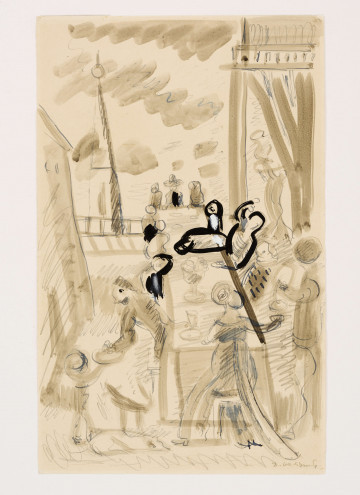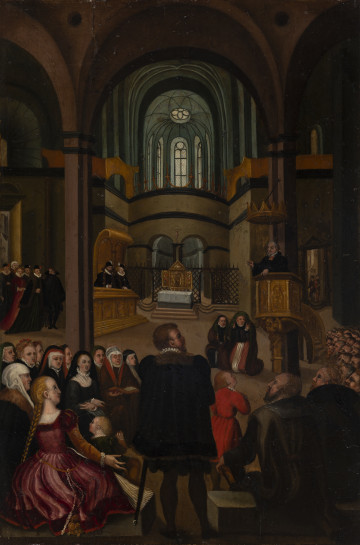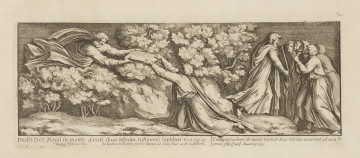
Feast. Sketch for the Great Feast
1933
National Museum in Lublin
Part of the collection: Genre scenes (19th–1st half of the 20th c.)
Zygmunt Waliszewski (1897-1936) began his artistic education in Tiflis (Tbilisi). He continued it at the Academy of Fine Arts in Kraków in the ateliers of Wojciech Weiss and Józef Pankiewicz. In 1924, together with other members of the Paris Committee who were convinced of the superior role of "pure painting", he left for Paris to continue his education. Unlike other Capists, for whom the essence of painting was seeing reality through colour, referred to as colour games, Waliszewski treated the subject of a painting not only as a pretext for formal solutions, and did not depart from literary narrative in painting. One of the motifs the artist eagerly used was the exaggerated, grotesque figure of Don Quixote, recalled in various compositional approaches with irony and humour typical of Waliszewski. An immensely popular work by Cervantes, being a parody of an ideal knight topos and medieval chivalric epic, caused many transformations of its protagonist over the centuries, and he ceased to belong solely to the sphere of literature. Interest in the motif of wandering of Don Quixote and Sancho Panza was also reflected in fine arts - the story and the motif of the erroneous knight was used by many painters, graphic artists and sculptors, among others: Honoré Daumier, Gustave Doré, Pablo Picasso or Salvador Dali. Waliszewski enters into a creative dialogue with them, juggling with convention, using his own unlimited imagination. In the Lublin sketch, the artist presents the images of Cervantes characters shaped earlier by European iconography featuring a slender knight on a lean horse, a burly squire or windmills in the background. However, Waliszewski, in his own way, marks the clearly grotesque and humorous mood of the scene, resulting primarily from the silhouettes of the riders, constructed based on opposites. Like Picasso's Don Quixote, the figures created by the Polish artist are characterised by a synthetic form and expressive, vigorous drawing.
Anna Hałata
Author / creator
Dimensions
cały obiekt: height: 22 cm, width: 35,3 cm
Object type
drawing
Technique
drawing and painting technique
Material
paper, ink
Creation time / dating
Creation / finding place
Owner
The National Museum in Lublin
Identification number
Location / status

1933
National Museum in Lublin

3. ćwierć XVI wieku
National Museum in Szczecin

1650 — 1670
National Museum in Szczecin
DISCOVER this TOPIC
National Museum in Lublin
DISCOVER this PATH
Educational path